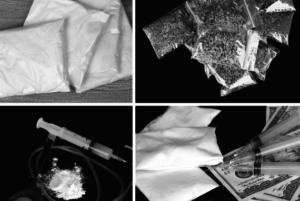 The Nuances of Possession with Intent to Deliver
The Nuances of Possession with Intent to Deliver
What facts does a police officer consider when he arrests a person for drugs and criminal charges them with Possession with Intent to Deliver? Most people think that it is the sheer amount of drugs that are found that will prompt the police to charge a person with Possession with Intent to Deliver or Distribute, but that is not always the case. Take the example of a woman who is found in possession of an “eight ball” of cocaine when her car is searched pursuant to a traffic stop.
First hypothetical. The police open the center console of the woman’s car and find the cocaine contained in a single plastic bag. With it, the police find a smoking pipe and a rolled-up dollar bill. The search turns up no money. The police decide to charge her with simple possession.
Now this hypothetical. The police find the same amount of coke but change the following facts: the cocaine is stored in 5 individual bags, and there is $300 in cash alongside it along with a cell phone. In the back seat, there is a small measuring scale and a “cutting agent” used to mix with the cocaine. The police decide to charge her with Possession with Intent to Distribute.
Why? Well, in the second hypothetical, there is an indication of intent to sell the cocaine represented by the packaging, the money, the phone, the cutting material, and the scale. As they say, the drugs are “possessed to move”. In the first hypothetical, while the actual weight of the cocaine is the same, it is evident from the pipe and the bill, that the woman is possessing the cocaine for personal use and not to sell. Hence, while we are dealing with two “eight balls”, the facts under the two scenarios differ greatly and lead to two different conclusions by the police. When it comes to PWID cases, it’s more than just the weight of the drugs, but also the context the police find it in.

